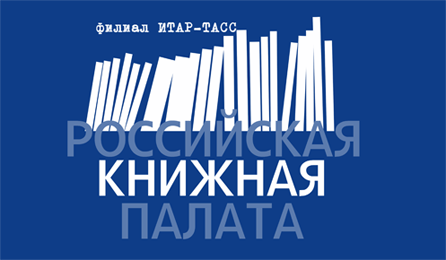Discussion of the presentation of T.G. Nefedova “Polarization of the social-economic space and prospects of rural areas in the old-developed regions of Central Russia” // The Russian Peasant Studies. 2021. V.6. №1. P. 154-169.
DOI: 10.22394/2500-1809-2021-6-1-154-169
Annotation
On March 11, 2021, at the joint seminar of the Center for Agrarian Studies of the RANEPA and the Chayanov Research Center of the MSSES, the researchers discussed the presentation of Tatyana Nefedova, DSc (Geography), the Chief Researcher of the Institute of Geography of the Russian Academy of Sciences, on the polarization of the Russian social-economic space and the prospects of rural areas in the old-developed regions of Central Russia. Geographers, sociologists and economists discussed the driving forces of the contemporary rural development in Russia, the relationship of the Soviet agrarian heritage with the new trends in the transformation of rural areas, the role of various rural-urban strata—migrant workers, summer residents and villagers—in the preservation and possible redevelopment of the countryside. The participants considered the key concepts of the presentation: polarization, reduction of rural areas, features of their previous development, regional and local examples of the mostly depressive but sometimes sustainable ways of rural development. Some participants focused on the latest trends of rural development (2020–2021) as determined by the impact of the pandemic on both the city and the countryside; discussed the meaning and directions of rural-urban migrations both in Russia and from neighboring countries to Russia; emphasized the role of the subjective factor (strong leaders) in the local sustainable rural development. The participants admitted that, under the increasing state and market centralization of resources accompanied by the so-called optimization of rural social infrastructure (in fact many rural schools, hospitals and cultural institutions were just closed) and given the weak and ineffective rural municipal self-government, there are growing negative trends of the strengthening depression in rural areas of Central Russia. However, the old-developed rural regions have the historical-cultural potential for a new rural development.
Keywords
Polarization, differentiation, center, periphery, depression, regionalization, old-developed regions, culture.
About the authors
Averkieva Kseniya V., PhD (Geography), Senior Researcher, Institute of Geography, Russian Academy of Sciences, Staromonetny Per., 29, Moscow, 119017.
E-mail: This email address is being protected from spambots. You need JavaScript enabled to view it.
Glezer Olga B., PhD (Geography), Senior Researcher, Institute of Geography, Russian Academy of Sciences; 119017, Moscow, Staromonetny per., 29.
E-mail: This email address is being protected from spambots. You need JavaScript enabled to view it.
Nefedova Tatyana G., DSc (Geography), Chief Researcher, Institute of Geography, Russian Academy of Sciences; 119017, Moscow, Staromonetny per., 29.
E-mail: This email address is being protected from spambots. You need JavaScript enabled to view it.
Nikulin Alexander M., PhD (Economics), Head of the Center for Agrarian Studies, Russian Presidential Academy of National Economy and Public Administration; 119571, Moscow, Vernadskogo Prosp, 82.
E-mail: This email address is being protected from spambots. You need JavaScript enabled to view it.
Pokrovsky Nikita E., DSc (Sociology), Chief Researcher, Institute of Sociology, FCTAS RAS; Professor, National Research University Higher School of Economics; 101000, Moscow, Myasnitskaya St., 20.
E-mail: This email address is being protected from spambots. You need JavaScript enabled to view it.
Pugacheva Marina G., Researcher, Center for Agrarian Studies, Russian Presidential Academy of National Economy and Public Administration; 119571, Moscow, Vernadskogo Prosp, 82.
E-mail: This email address is being protected from spambots. You need JavaScript enabled to view it.
Smirnov Sergey N., DSc (Economics), Head of the Center for Analysis of Social Programs and Risks, Institute for Social Policy, National Research University Higher School of Economics; 101000 Myasnitskaya St., 20, Moscow,
E-mail: This email address is being protected from spambots. You need JavaScript enabled to view it.
Treivish Andrei I., DSc (Geography), Chief Researcher, Institute of Geography, Russian Academy of Sciences; 119017, Moscow, Staromonetny per., 29.
E-mail: This email address is being protected from spambots. You need JavaScript enabled to view it.
Rodoman B. Russian cultural landscape: Theoretical and practical implications of the concept // The Russian Peasant Studies. 2021. V.6. №1. P. 13-25.
DOI: 10.22394/2500-1809-2021-6-1-13-25
Annotation
The author argues that the precise final definitions (recognized and universal) are often less important for scientists than the key features of the studied phenomena. Therefore, the author suggests to combine different concepts in order to get a working and temporary definition of the cultural landscape. The article presents this term as non-evaluative, mainly typological, non-taxonomic and ‘real’, which allows to consider its borders with the natural landscape as mobile, conventional and relative due to the fact that both landscapes are affected by human activities. The author describes factors and trends in the development of the cultural landscape, and regionalization as a tool to study and preserve it. The Russian cultural landscape is primarily determined by the interaction of the state with nature due to the obvious shortage of self-organized local communities. The author identifies endogenous (internal) and exogenous (external) factors in the (self)-development of the cultural landscape, which can be either stimulating or hindering. As the main features of the Russian cultural landscape the author considers its historically developed rhythm and ability to self-recover, which differ by country and region. Centuries of the military-colonial despotism and unprecedented centralization of the supreme power have turned the Russian space into a totalitarian landscape with the hypertrophied radial connections and the suppressed peripheral connections, which is embodied in the administrative-territorial division and determined the extraordinary social-economic, geographical, ecological and territorial polarization. The Russian landscape has a very specific feature – the so-called ‘inner periphery’, or hinterland (relative and ubiquitous): these are territories located closer to the country’s cores than to its outskirts but with all negative features of the outskirts. This inner periphery plays an important role in the preservation and development of the natural landscape as a potential basis of the territorial ecological framework, but to ensure such a role we need a comprehensive cultural-historical regionalization.
Keywords
Landscape, cultural landscape, administrative-territorial division, etatization of landscape, anisotropic landscape, ecological potential of administrative borders, social-economic polarization, hinterland, inner periphery, regionalization, cultural-historical areas.
About the author
Rodoman Boris B., DSc (Geography).
E-mail: This email address is being protected from spambots. You need JavaScript enabled to view it.





















